#Western depictions of Asian women
Note
I think it’s important to note that the artist you singled out, the current karma miniseries artist, is Vietnamese. So probably not willfully infantilizing xuân out of racism. I think that art style just has a lot of childishness in the character design. Both rogue and xuân look very “chibi” in that pic
In the vol 1 art she looks older than the other new mutants but not like. As close in age to ororo (~6 years older than her) as to Beto (~6 years younger) (assuming the 19 age is true)
And karma’s age has been scaled down over the years to make her closer in age to the other new mutants. She would have been older than rogue but there’s no way that’s the case anymore (and probably wasn’t the case in nm vol one after the early issues, why would adult karma have been on the junior team while 17-18 yo rogue was on the grown up team without a special exception like kitty? Who xuân went to college with?). All their ages got messed up a lot during the x force era, beto aged twice as fast as most of the other characters and rahne aged half as fast if we take their introduction ages as gospel (everyone hit the early twenties except rahne, who was still 16 instead of 18-19)
I don’t want to completely invalidate your point but it just kind of rubbed me the wrong way when you singled out the Vietnamese artist as being “worse” for karma than the original (white guy) which was messy in portraying poc and somewhat inconsistent at best
Oh, I'm absolutely not singling out the Vietnamese artist, and I'm definitely not saying that the original artwork for Karma wasn't problematic (although the original design looked fine to me), as there are definitely portrayals of her in her early appearances that look like racist depictions of E Asian/SE Asian woman. I just generally find it weird how she's been infantilised and de-aged in a general trend towards de-aging that's been going on for many years. To me this isn't necessarily an artist problem, it's an editorial problem, where we can't have Asian characters without fitting into some sort of trope or stereotype. Sure, Rogue looks chibi-fied in the latest issue, but she still looks like a grown woman compared to Xuan, who looks like a kid, even though they're probably about the same age.
I'm really not bothered by which team a character is in, no matter their age. Kitty and Rogue can be in the X-Men, Karma can be in the New Mutants. I think any character can be in any team regardless of age (unless it's weird and creepy). I don't necessarily mind characters aging slowly either, but regressing in age for no reason is kinda weird to me. At least Jubilee has kinda aged a little bit, but Karma's situation is ... odd to me. I may have missed out a chunk of her storyline that explains the retcon to de-age her (I haven't kept track of her for ages, tbh). And of course, this may all generally be a problem I have specifically, in which case, I apologise for offending anyone. I just feel strongly about it as a biracial E Asian woman who has grown up constantly being infantalised.
TL;DR: I'm not singling out the Vietnamese artist's work per se. The artwork is cute and I like it. I'm criticising editorial mandates that say it's okay to have a mature SE Asian woman look like a 12 year old compared to a mature Western woman sitting next to her, in a world where Asian women are often either depicted as exoticised femme fatales or kawaii lolita dolls.
2 notes
·
View notes
Text
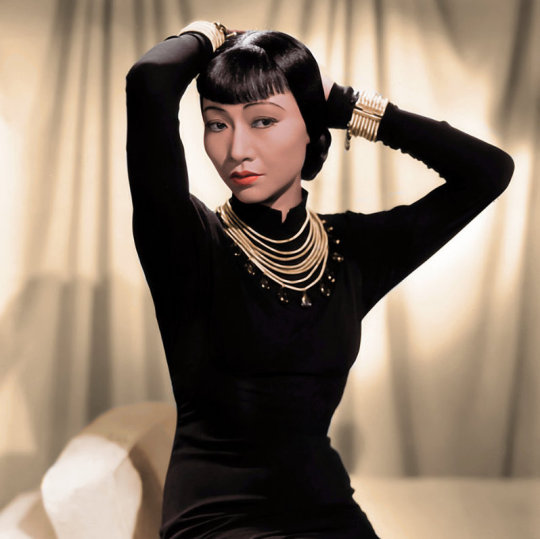
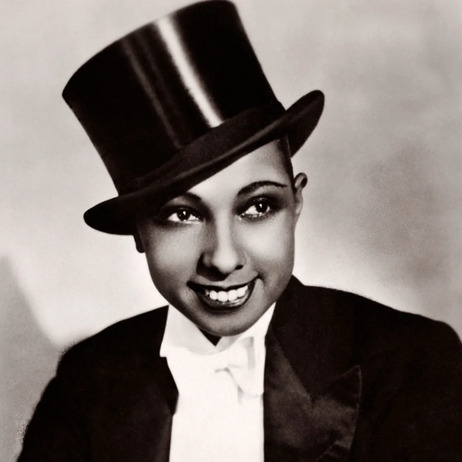
Propaganda
Anna May Wong (The Thief of Bagdad, Shanghai Express)—Wong was the first Chinese American movie star, arguably the first Asian woman to make it big in American films. Though the racism of the time often forced her into stereotypical roles, awarded Asian leading roles to white actors in yellowface, and prohibited on-screen romance between actors of different races, she delivered powerful and memorable performances. When Hollywood bigotry got to be too much, she made movies in Europe. Wong was intellectually curious, a fashion icon, and a strong advocate for authentic Asian representation in cinema. And, notably for the purposes of this tournament, absolutely gorgeous.
Josephine Baker (The Siren of the Tropics, ZouZou)— Josephine Baker was an American born actress, singer, and utter icon of the period, creating the 1920s banana skirt look. She was the first black woman to star in a major motion film. She fought in the French resistance in WWII, given a Legion of Honour, as well as refusing to perform in segregated theatres in the US. She was bisexual, a fighter, and overall an absolutely incredible woman as well as being extremely attractive.
This is round 6 of the tournament. All other polls in this bracket can be found here. Please reblog with further support of your beloved hot sexy vintage woman.
[additional propaganda submitted under the cut.]
Anna May Wong propaganda:

"She so so gorgeous!! Due to Hollywood racism she was pretty limited in the roles she got to play but even despite that she’s so captivating and deserves to be known as a leading lady in her own right!! When she’s on screen in Shanghai Express I can’t look away, which is saying something because Marlene Dietrich is also in that film."
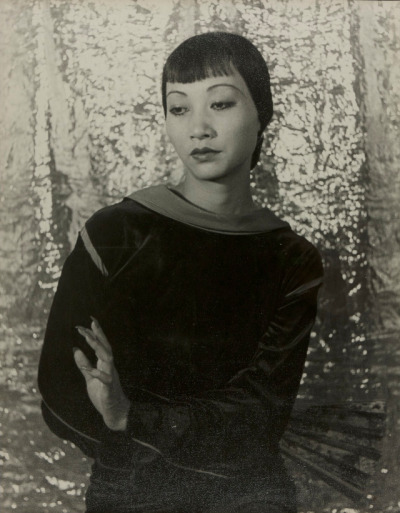
"SHE IS ON THE BACK OF QUARTERS also she was very smart and able to speak multiple languages and is a fashion icon on top of the acting/singing"
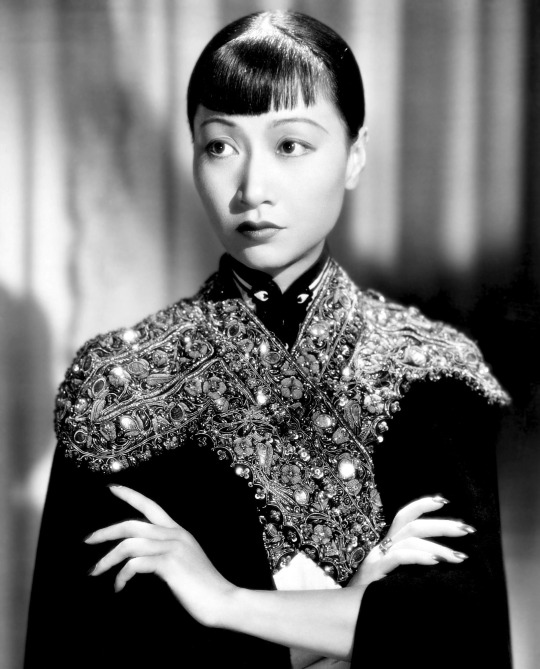
"Paved the way for Asian American actresses AND TOTAL HOTTIE!!! She broke boundaries and made it her mission to smash stereotypes of Asian women in western film (at the time, they were either protrayed them as delicate and demure or scheming and evil). In 1951, she made history with her television show The Gallery of Madame Liu-Tsong, the first-ever U.S. television show starring an Asian-American series lead (paraphrased from Wikipedia). Also, never married and rumor has it that she had an affair with Marlene Dietrich. We love a Controversial Queen!"

"She's got that Silent Era smoulder™ that I think transcends the very stereotypical roles in which she was typically cast. Also looks very hot smouldering opposite Marlene Dietrich in "Shanghai Express"; there's kiss energy there."

"Hot as hell and chronically overlooked in her time, she's truly phenomenal and absolutely stunning"
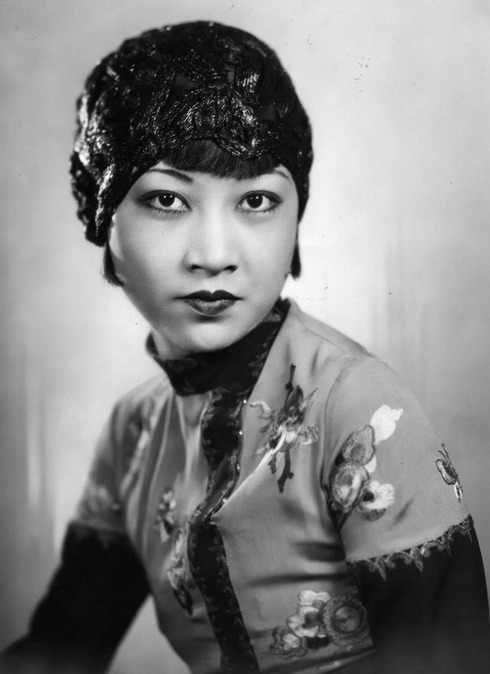
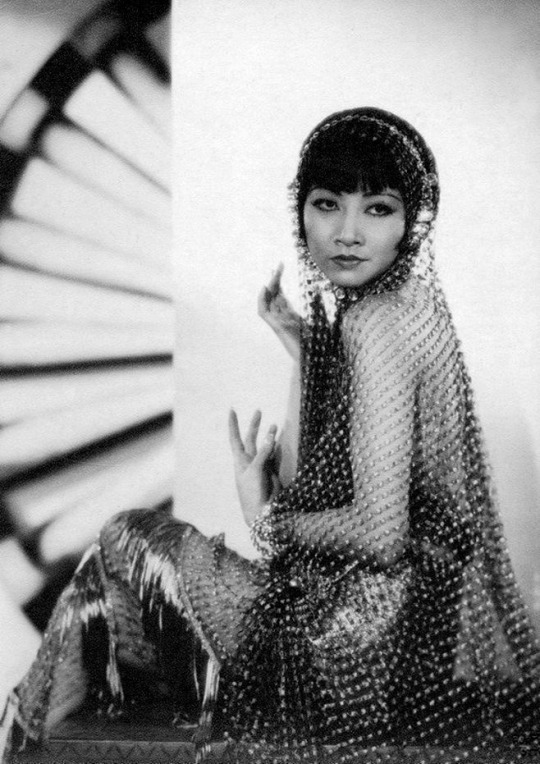
"A story of stardom unavoidably marred by Hollywood racism; Wong's early-career hype was significantly derailed by the higher-up's reluctance to have an Asian lead, and things only got worse when the Hayes code came down and she suddenly *couldn't* be shown kissing a white man--even if that white man was in yellowface. After being shoved into the Dragon Lady role one too many times, she took her career to other continents for many years. Still, she came back to America eventually, being more selective in her roles, speaking out against Asian stereotypes, and in the midst of all of this finding the time to be awarded both the title of "World's Best Dressed Woman" by Mayfair Mannequin Society of New York and an honorary doctorate by Peking University."
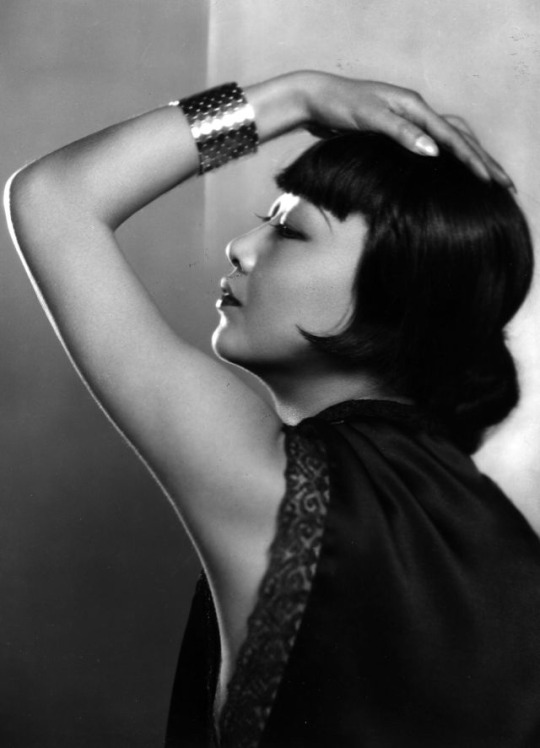
"Incredible beauty, incredible actress, incredible story."
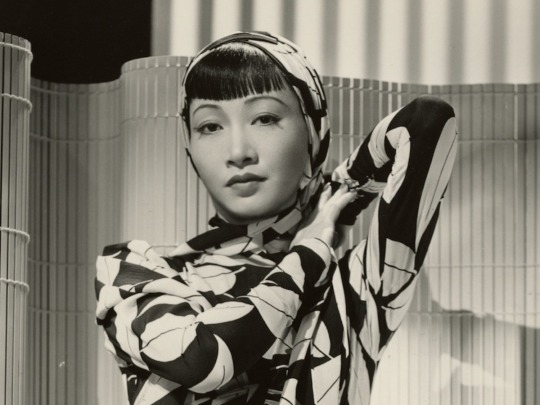
"-flapper fashion ICON. look up her fits please <3 -rumors of lesbianism due to her Close Friendships with marlene dietrich & cecil cunningham, among others -leveraged her star power to criticize the racist depictions of Chinese and Asian characters in Hollywood, as well as raise money and popular support for China & Chinese refugees in the 1930s and 40s. -face card REFUSED to decline"
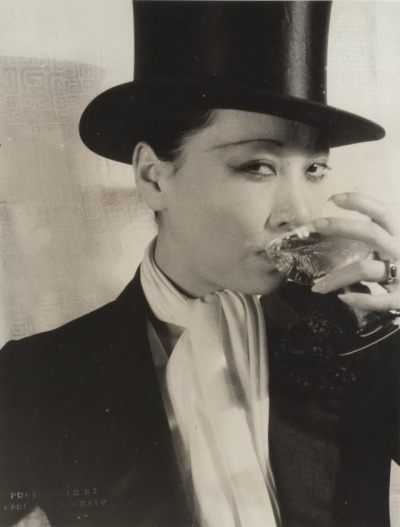
Josephine Baker:

Black, American-born, French dancer and singer. Phenomenal sensation, took music-halls by storm. Famous in the silent film era.
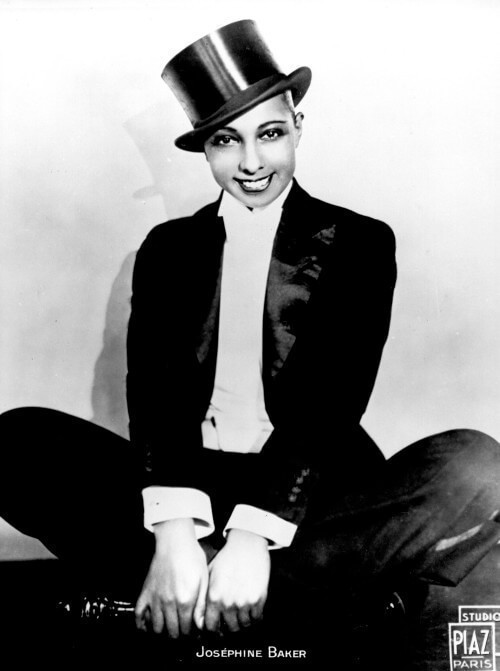
Let's talk La Revue Negre, Shuffle Along. The iconique banana outfit? But also getting a Croix de Guerre and full military honors at burial in Paris due to working with the Resistance.
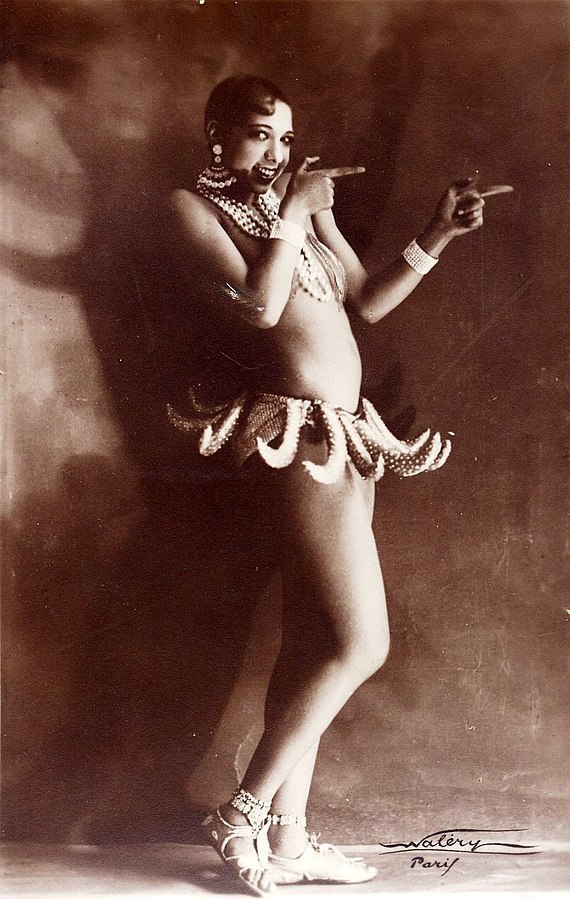
She exuded sex, was a beautiful dancer, vivacious, and her silliness and humor added to her attractiveness. She looked just as good in drag too.

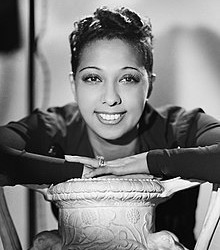

So I know she was more famous for other stuff than movies and her movies weren’t Hollywood but my first exposure to her was in her films so I’ve always thought of her as a film actress first and foremost. Also she was the first black woman to star in a major motion picture so I think that warrants an entry

Iconic! Just look up anything about her life. She was a fascinating woman.

588 notes
·
View notes
Text

Sophie is Korean!
Things to keep in mind
———
Yay! Sophie Baek is finally here and with all of excitement of this casting, I think it’s also important to bring attention to the new intersectionality that comes with the character of Sophie (specifically show Sophie).
Why should you take my words into account? Well, as an Asian woman in society today, I feel that I am qualified to speak on this topic since I’ve experienced all of this.
All of my words come from kind intentions, and I purely just want to communicate to the fandom how to approach Sophie being Asian in a respectful way.
Asia is a gigantic continent filled with various countries that have a multitude of cultures and ethnicities. While on the surface they all seem similar, they each have their own customs and traditions that have meaning within our culture. Do not combine them.
It’s important to remember that not every Asian person is Chinese, Japanese or Korean (East asian).
With Sophie being Korean, please do not generalize when writing about what you think you know about Korean culture.
You like Kpop and Kdrama? Great! BUT that does not define what Korean culture is and you shouldn't use that content as a reference.
When writing, be aware of explicit and unconscious biases you have about Asian people.
Asian stereotypes (Model Minority, Dragon Lady, Lotus blossom, etc) are very harmful and spread false narratives about us. Stereotypes eliminate the dimensions of who we are as Asians (South, South East, East, North, West).
Please, please, please do not fetishize. Especially since Bridgerton is a romance series it's extremely important to be mindful of the scenarios you put in your fics.
This also includes the White Savior Complex we see a lot in media!
If you’re writing about something specific, research it and fully understand the content you are putting into your work. Feel a little iffy about if you should put it in your fic? Probably don’t then. It’s that easy!
It's always great to ask someone who is a part of the community as well to see if what you're writing about is appropriate or potentially offensive in any way.
Describing Sophie is something new as well. Be mindful on how you describe her and other Asian characters.
Let me be clear: descriptions like 'slanted eyes' or 'yellow skin' are harmful
Here are some great resources that go into further detail about specific things! Rather than me paraphrasing their words it's best to link the direct source. Even as a part of this community, these articles were a reminder of how I must keep myself in check as well!
Describing Asian Eyes
Some important tips on making/writing Asian OCs
writing east asian characters
The Depiction of Asian Characters - Book Edition
The Dragon Lady, the Lotus Blossom, and the Robot: Archetypes of Asian Women in Western Media
To wrap this up, I want to be clear that I’m not a professional on this topic, but as someone who has been affected by harmful portrayals in media, I feel compelled to share my perspective. My hope is to spread awareness and encourage others to be mindful of how they approach these subjects, especially if they may not be fully informed. It’s about showing respect, doing the necessary research, and recognizing the impact our words and content can have on real people and cultures. By staying educated and considerate, we can be more aware and thoughtful in our actions.
#researching before writing about Sophie? very mindful very considerate#pls pls don’t write anything offensive 😘#shout out to the group chat for proofing!!#my protectiveness and connection to Sophie has multiple so much now that she’s Asian#u know who u r 🫶🏼#bridgerton#benedict bridgerton#sophie beckett#benophie#sophie baek#asian sophie#bridgerton writing#bridgerton fic
241 notes
·
View notes
Note
Hi! You mentioned in a prev oneshot that you were Indian, as a fellow south asian it is so nice to have someone into the fandom as well !!! May I have a request if batboys with an south asian so who does Indian classical dance like bharatnatyam or odissi please?
Heyyy I have never professionally learned classical Indian dances but I love watching them so ill try my best. Im sorry if its offensive, Im doing fem reader cuz gn wasn't requested..hope that okay too
Batboys x Dancer!Y/N
Dick grayson
He loved the story the dances depicted. He learned all the meanings and history behind all the hand movements and music.
Dick had probably been to India for a mission so he does know a little about indian history but now he has a much stronger motivation to learn everything and anything about that culture .
Also we all know dick has a thing for strong powerful women. And Bharatnatyam or Odssi or any indian classical dance for that matter REQUIRES SO MUCH STRENGTH . The facial expressions, the precise movement and the beauty of it all..he is whipped.
'He also loves when you get in touch with your culture. Dick is like a culture connoisseur and having a beautiful south asian girlfriend who is proud and expressive of her heritage makes him so proud.
He for sure has videos on videos which he show or boast about to anyone- even at galas , his favorite thing to talk about you and he is just so proud.
Jason Todd
I dont think todd will take the time to look into the difference meanings or stories these dances depict.
I have mentioned how much he stares and now he has a new found excuse to stress. Its like those movie montages of the wife through the husbands eyes where there is like a light glow behind her and he is just laughing (and then she dies or something)- idk if you know what I'm talking about but that exact thing happens with him.
you are like his salvation , so beautiful, golden poised and graceful. Its like a beggar seeing a goddess , a murderer on the steps of church or a ray of sunshine in the cold cold dark city - it becomes his way to spirituality.
He doesn't talk that much about it. the whole experience feels too surreal for him and he loves to see that side of you. when your practicing and don't have the routine perfected, he loves seeing the side of you no one else would get to see.
Tim drake-
This boy probably went to the ballet as a kid and I mean western rich parents-gotham city- I don't think he knows anything about indian classical dance so when he sees it for the first time he is shocked
He Is so intrigued , It just makes you so much cooler. He will love dropping in the middle of his patrols to watch you train and bring you snacks
He also loves doing your makeup for you , and the whole outfit....it looks super complicated and he is good with assembling stuff so he'll be really into it.
He would tbh encourage you to use your skill to start and internet channel and use that to promote movements. Also if you are into the idea of teaching immigrant kids on how to dance, he'll help find the means because being connected to your roots are just so important.
Rather than boring ass ballet in galas , he will promote other styles of dance especially indian classical.
Will cheer like a madman after your performances , even if they are at rich gotham galas. "WOHOO THATS MY GIRL THATS REAL ART YOU SEE THAT YOU RICH PRICKS"
Yea just because you have this super serious super cool skill doesn't mean you both wont be sitting in a dinner eating greasy food in the whole costume+makeup after performances. Youre still teenage dirtbags after all
Damian wayne-
he will draw you . loves sitting and sketching you dance .
He too is really into strong women and appreciates the beauty and precise art of indian dance.
Itll remind him of his home, like up in the mountains. Maybe dance is taught as a way of developing balance and precision. So to him you look like a strong fighter.
It just brings nostalgia and you look so ethereal while you dance. I think out of all batboys he would be most appreciative of the art
these are comparatively shorter but i didnt have too many thoughts. hope its okay tho
#Tim Drake + Red Robin#•#Tim Drake x Reader#Tim Drake x You#Tim Drake x Y/N#Tim Drake Fluff#Tim Drake Angst#Tim Drake Comfort#Tim Drake Headcanons#Tim Drake Imagines#Red Robin x Reader#Red Robin x You#Red Robin x Y/N#Batfamily#Batfamily x Reader#Batfamily Fluff#Batfamily x You#Batfamily x Y/N#Batfamily Headcanons#Batfamily Imagines#Batboys#Batboys x Reader#Batboys Fluff#Batboys Headcanons#Batboys Imagines#Jason Todd + Red Hood#Jason Todd x Reader#Jason Todd x You#Jason Todd x Y/N#Jason Todd Fluff
66 notes
·
View notes
Note
hi! loving your art. I was watching your awesome stories/gifs and I was wondering: how did Chang develop his feelings for Tintin? Did he discover them before or after him? How did he react and why? (English is not my first language so if you see a grammatical mistake, I'm sorry. Also, sorry if so many questions made you feel like you were in a philosophy exam)
Thank you so much! As a contrast to the rest of the Marlinspike team I'm writing Chang as someone who makes friends and develops crushes pretty easily!
I imagine he's had a crush on Tintin for some time, possibly from when they first met. He's been at the mercy of his circumstances for most of his life until that point - Tintin basically makes him feel capable of doing stuff.
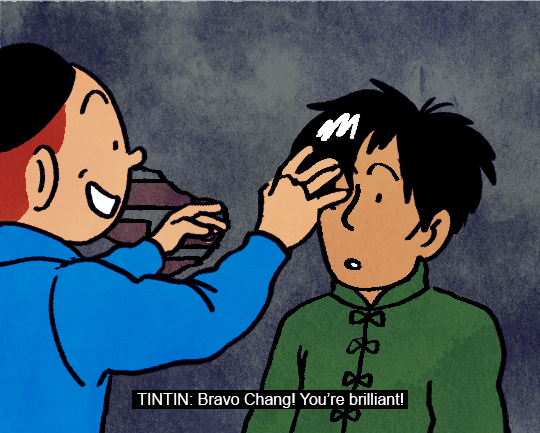

He's pretty heartbroken after the Blue Lotus. Tintin doesn't contact him for years. Chang is struggling to adjust to his new family and is failing at school, having missed out on a good education for a few years prior. Until Tibet he feels pretty hopeless, he will never live up to the time when he took down a drug ring.
His near death experience in Tibet shakes him out of this rut. He starts to travel and take up hobbies like dance and photography. Didi trains him in some basic martial arts. Tintin makes an effort to actually stay in touch this time. Chang has some abandonment issues as he's frequently lost people throughout his life, so he's someone who's willing to give people second chances, even if they've hurt him badly. Chang thinks he's well over his crush on Tintin when he comes around to Belgium for his studies, but falls for him again very quickly!
Unlike Tintin, Chang is a lot more comfortable with who he is. He's used to being the odd one out and has generally low expectations for himself, so just goes with the flow.

Below I talk a little with how I'm going about writing him and the historical context surrounding this, cw for mentions of racism (sinophobia) and queerphobia:
I'm writing Chang as bi, I thought it would be interesting to explore as Asian men were perceived differently in the 30s compared to today. While Asian men in the West are currently heavily desexualised in the early 20th century they were stereotyped as predatory and deviant. In London a lot of Chinese immigrants were male dockworkers, so when they married white women there was a lot of fearmongering about predatory and disloyal Chinese men.
A lot of depictions of Asian men in Western media reflected these stereotypes (and often used queercoding to push the idea of Asian men being animalistic seducers - General Henry Chang in Shanghai Express (1932) was written to be bisexual while posing as a threat to the white leads). Some examples off the top of my head include Hishuru Tori from The Cheat (1915) and The Mask of Fu Manchu (1932). Novels frequently depicted Chinese drug lords with borderline supernatural powers in manipulation.
On the other hand I've noticed how fans frequently depict Chang as someone who's submissive, demure and soft, which ignores how ridiculously brave and proactive he is in canon (stealing documents from police officers, charging into a man immediately after getting shot at by a machine gun, I could go on!). It's a common example of Fandom Racism (not accusing anyone specifically, it's just a trend I've noticed.)
When writing Chang I'm kinda reckoning with two different eras. From a contemporary angle I'm writing him as a love interest, which as an Asian guy I rarely see in media today. I also gotta consider his own time and context, how he would navigate being a queer Chinese guy, and how that would affect his relationship with others and himself.
#asks#fanart#tintin#adventures of tintin#chang#tinchang#gif#animation#2d animation#comic#racism cw#biphobia cw#i am Absolutely overthinking this whole thing but i will not stop#tldr chang falls in love easily#he has a small crush on tintin from the blue lotus#gets his heart broken#meets tintin again and they rebuild their friendship#and he falls for him again#the blue lotus
843 notes
·
View notes
Text
something i really love about amrita sher gil's work is how often she identified herself with other women of colour across class lines and continents, like so much of her work was a critique of orientalism & particularly western men's hypersexualized depictions of women of colour in art & her work repeatedly strove to recontextualize brown women's bodies as a way of 'taking back control' from white men artists and the academy. and she was someone who had studied art in france and was personally familiar with it; she won a gold medal and was elected an associate of the grand salon in paris, and notably she was the youngest person and the only asian of any gender to have received those accolades. her experiences as not only a punjabi sikh but also a hungarian jewish woman informed so much of her work, and she chose to reject the western academy and focus her work and sense of self on india and impoverished, low caste indian women in particular. and considering her death at 28 is most commonly attributed to a failed abortion - which couldn't be safely accessed as a struggling artist in lahore in 1941 - there is something about her work's emphasis on women of colour's bodily autonomy that just breaks my heart
101 notes
·
View notes
Text
Thanks to my post about the 28th, it’s come to my attention that a significant portion of humanity don’t read history books for fun, so here’s a few broad strokes of what, exactly, is going on with the cultural connotations of race within Dracula, as understood by an American:
European racism of the day was predominantly based on cultural ethnicity rather than skin color, and one of the main sliding scales (other than how old and prestigious the ancestry was) was how far west you were on the Eurasian continent. The further east you went, the less “civilized” things became, until you hit Asia and Oceania and just became inundated with absolutely rancid racist caricatures. Stuff from the “Orient” was there for exotic/shiny toys and moral lessons about how much better the West was, and not much else, so you can imagine what depictions of actual Asian people thus became.
(We’re faced with this east vs. west scale in Jonathan’s very first entry: Budapest straddles the line between the “civilized” western part of Europe and the “uncivilized,” opulent, and exotic world of eastern Europe. Jon is going from the known and familiar city into the mysterious, unfamiliar wilderness, an extremely common Gothic horror archetype.)
Both the fear of the unknown and the exoticizing/othering of Eastern Europe play heavily into Dracula’s themes, with the sexually predatory Count Dracula coming to England to do all sorts of unspeakable sordid things to innocent English women. (Not exactly Stoker’s finest hour, but this was a typical attitude of the day.)
Following that, it was also thought at the time that one’s moral character was essentially genetic. Certain people of certain races were predisposed to be “better” or “worse,” and your own moral character was also influenced by your parents’ status in society and behavior. A prostitute mother or a criminal father meant you would inherit their dubious moral quality, which is partially where “this person has bad blood” comes from. Bad blood is literally the negative morality passed onto you from your parents: you’ve inherited the bad qualities carried in their blood.
Linking back to the east-west thing, the further east you go -you’ve guessed it- the worse this supposed ancestral bad blood gets. People of “lesser” races included the Romani, Jews, Slovaks (and sometimes the Russians), and they were just supposed to be, like, naturally inclined to be bad. They were Programmed For Crime from the moment they were born, so you didn’t need to explain why such a character was evil when they showed up in your novel: I mean, they’re [INSERT RACE], aren’t they? It’s in the blood. No explanation needed. Everybody knows that.
The assumption of the time was that such people were literally born bad, which of course naturally justified how they were treated. When they showed up on a page, you were supposed to distrust them on sight.
Occasionally, low-class people were also treated as a race all their own, like poverty was some kind of moral failing. After all, the older, more prestigious, and wealthier your family was, the better their inherent moral quality, so poor people are obviously uncouth and have bad blood, right?
(It’s an extremely stupid circular way of thinking, but that’s bigotry for ya.)
Dracula is a nobleman with old lineage, but he’s also steeped in the flavor of Eastern Europe: “barbaric” and proud, yet initially treating Jonathan with extreme courtesy; threateningly exotic and yet also familiar with English customs. As we go through the book, you’ll see that he almost exclusively hires Romani, Jewish, or extremely poor for his henchmen: he’s a force of evil that uses other “evil” tools, who bend easier to his will than “normal” people of “proper” races.
(By all means, please pause here a moment to scrub yourself of the nauseating feeling that such a bullshit attitude evokes.)
In any case, Dracula himself is a pretty good example of all these racial ideas converging, which was also why he made such an effective monster to the Victorians: there’s just enough that’s familiar and proper in him that they couldn’t quite properly Other him, which links back to the transformative horror of vampirism turning something formerly good into something very very bad, which with their worldview of “you are born with this moral code because of racial predisposition and lineage” is just shocking. You mean this Eastern European man can infect our formerly good and pure citizens and make them act his way, just by an act of force? Uh-oh.
Anyways TLDR Dracula is a book steeped in the cultural traditions and expectations of the day which means that it’s lovely horror but also an absolute crock of shit at times due to racism (and several other -isms, which I will not cover here because I am trying not to make this an essay).
287 notes
·
View notes
Note
"Choice feminism" is bad for women in East Asia? What are you on about? Are you seriously rather subscribe to radical feminism that is so white and fail to account WOC and women from the global south in general? Are you seriously going to subscribe to a transphobic movement? You can't say this kind of feminism isn't transphobic because look at 4B or 6B4T in South Korea and China. The movement explicitly exclude transwomen and has been glorified to death by mostly white women. If anything I say the feminism that includes transwomen is good for East Asia to fix the transphobia problem. I feel sorry for transpeople in East Asia if all the feminists are like you.
I'm just going to elaborate point by point.
"'Choice feminism' is bad for women in East Asia? What are you on about?"
On paper, choice feminism sounds great because it empowers women to do whatever they want, as long as it's their choice. In reality, women have been groomed to "choose" things that primarily benefit men. People don't make choices in a vacuum; we're influenced by our environment. When strict gender roles and expectations for women still exist aggressively in East Asia, the path of least resistance is to conform to those values. East Asian women "choose" to be housewives and follow exhaustive beauty regimes because society is kinder to them when they do. Or they think these choices are good for them due to moral grooming. Let me ask you: if a conservative, religious, sheltered, and uneducated woman chooses to marry a man 20 years older and have 5+ babies, how much of that is truly her choice? What women need is not empowerment, but agency.
"Are you seriously rather subscribe to radical feminism that is so white and fail to account WOC and women from the global south in general?"
That's an interesting perspective, anon! I'd love to hear more about why you consider radical feminism to be "white" someday. Personally, I think liberal feminism (or 3rd wave feminism/choice feminism, I use these terms interchangeably) is the movement that fails to account for women from the global south. While it's true that liberal feminism is quite inclusive, it is still mostly US/Europe-centric (and for simplicity, I include Canada and Australia in the same category). This means that when it accounts for WOC, it's primarily considering WOC who live in those regions. It is known as "Western feminism" for a reason. Radical feminism, on the other hand, doesn't need to work as hard to include WOC from the global south because those women already tend to gravitate towards it instead of liberal feminism. The reason is that liberal feminism has shifted its focus from women’s issues to a broader concern with gender. When women outside the US and Europe haven’t even secured basic rights directly tied to their sex, why should they align with a movement that has moved on to different concerns?
"Are you seriously going to subscribe to a transphobic movement? You can't say this kind of feminism isn't transphobic because look at 4B or 6B4T in South Korea and China. The movement explicitly exclude transwomen and has been glorified to death by mostly white women."
4B and 6B4T at the core are meant to serve as direct opposition of South Korea and China's patriarchal state and combat its aggressive pro-natalist policies, which view women’s bodies and reproductive abilities as tools for the state’s future. Other aspects of the movement, such as rejecting rigid beauty standards and degrading depictions of women in otaku culture, are part of women's effort to not make themselves (excuse the wording) look "breedable". I hope it’s clear why transwomen can't be included in this specific movement.
Regarding the movement being glorified mainly by white women, I'm not aware it is the case because my focus isn't on the West like yours is. But even if we accept your claim as true, how does the support from white women automatically make the movement fundamentally "white" (and, by implication, bad in your view)? Roe v. Wade was just overturned, so it's understandable that Western women, especially Americans, would take an interest in the 4B movement. Or maybe they simply empathize with their fellow women. Let me ask you this: for someone so determined to include transwomen in every feminist movement, why do you consider white women less of women?
"If anything I say the feminism that includes transwomen is good for East Asia to fix the transphobia problem. I feel sorry for transpeople in East Asia if all the feminists are like you."
Or we could have separate movements that collaborate when necessary but don't have to be synonymous. Why does feminism need to stretch itself thin to cover every issue? Isn't that one of the factors Roe v. Wade was overturned despite majority in the US disapproved supreme court decision? Feminism in the West has been defanged so much by consumerism, sex empowerment and gender issues. I also believe having a movement specifically for trans people allows for a focus on their unique issues, making it more effective.
You don't need to be sorry for transpeople here because what I'm fighting for can ultimately benefit them too. You policing women's advocacy movement, however, does not benefit anyone.
35 notes
·
View notes
Text
Hot take about APH China Yao Wang
As a Chinese person, I tend to dislike it when I see attempts to make APH China more “traditionally” masculine than his canon counterpart, or make him basically a Chinese grandpa/CCP chairman, especially when such attempts come from outsiders and this change is shown as an “improvement.” There’s plenty to say on the feminization of East Asian men in popular media, and many fandom depictions of Yao and the other East Asians certainly fall into these tropes. However, masculinizing China feels like an reaction often borne out of femmephobia and can also put down those who use a gender non-conforming China to explore the fluid nature of gender and presentation throughout Chinese culture and history.
On the other hand, I do also find it problematic when people overcorrect this trend by uncritically and whole heartedly embracing Himaryu’s version of the character. China’s depiction in the Hetalia series is very reflective of a Japanese man’s views in the late 2000s to early 2010s, and it fits into a long trend of Japanese fetishization of Chinese women and exoticization of Chinese culture. Chinese people can and do reclaim China’s androgyny and gender nonconformity for themselves, and at least for me, it’s a very important part of how I see and portray him. But I think it’s important for everybody to keep in mind of this cultural context, especially if you’re an outsider.
Embrace Wang Yao’s gender nonconformity, I know for a fact mainlanders love their malewife China and who am I to deny them one of the most exquisite pleasures in life? But if you’re an outsider, you should be careful of the surrounding context and how Chinese people have been depicted and stereotyped in foreign media as someone looking in.
tl;dr consume critically and outside of a western-centric geopolitical viewpoint
228 notes
·
View notes
Text
Notes on Empire of Care by Catherine Ceniza Choy
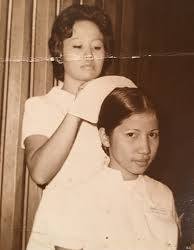
The scapegoating of Filipino nurse immigrants: Filipina Narciso and Lenora Perez are examples of two nurses who were scapegoated.
Filipino nurses with temporary work visas, H-1 visas, were exploited
Mass murder cases involving Filipino nurses included the 1996 Richard Speck massacre. Some of his victims were Filipino nurses and the only survivor was one of these Filipino nurses

The only survivor - Luisa Silverio
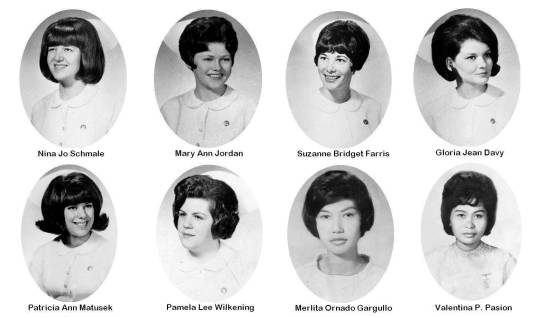
The victims
The 1975 Veterans administration hospital murders that happened in Ann Arbor, Michigan, and involved the previously mentioned nurses Narciso and Perez, bering initially convicted and then later acquitted. They were accused of poisoning and conspiracy
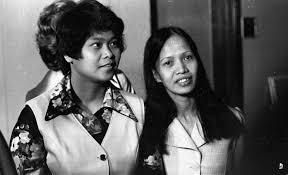
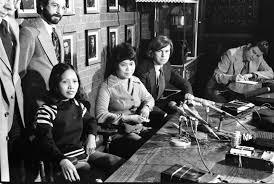
These cases reflect how US imperialism shaped the treatment that was levelled at Filipino nurses
During the late 1970s, Filipino nurse organisations emerged in order to combat the exploitation and discrimination that Filipino nurses faced
There is still a huge gap in the study of Filipino Americans. Quoted from Sucheng Chan's essay on Asian American historiography
"Despite the steady progress in Asian American historical scholarship, significant gaps remain. The most glaring is the absence of book-length studies on Filipino Americans"
American imperialism still shapes the way in which Filipinos - especially Filipino women are perceived
Jesse Ventura, an American politician in his autobiography "I ain't got no time to bleed" reminisces on his days as a Navy Seal stationed in the Philippines.
He talks about being young with a large libido, and how the abundance of Filipino women for him and his comrades to take home relieved that.
He spoke of going through less hurdles when he came to getting a Filipina to sleep with him compared to American women back home. In other words - Filipinas were easy.
This is a reflection of how US imperialism has shaped how the Philippines is viewed.
Filipino women are used in order to portray the Philippines as a feminised, hypersexual, always-willing paradise for the pleasure of Western men.
This depiction of so called "love" between Filipinos and Americans erases the long history of US violence, US domination, the colonial relationship between the US and the Philippines and the history of sexual violence perpetuated against Filipino women. Not to mention the destruction of the environment and spread of disease

US military presence in the Philippines also helped in influencing migration patterns.
By 1970, there were more Filipino men in the US navy than the Philippine navy. This was due to the active recruitment of Filipino men into the US military
Yet another example of how the US imperialist narrative erases truths about history and the lived experiences of Filipinos:
Filipino American organisations had to convince Minnesota legislature to correct a plaque commemorating the Spanish-American war.
The plaque stated that it was honouring the fact that the war was fought to free the Philippines from the tyrannical Spanish
This is unequivocally untrue and rings back to the concepts of American exceptionalism - The US being far more "benevolent" to it's colonies than their European counterparts.
The war was fought in order to defeat the Spanish - not to liberate the Philippines.
The Philippines then fought against the US for independence thereafter
America's so called "forgetfulness" when it comes to Filipino-American history continues to hurt Filipinos.
In particular, Filipino American war Veterans who struggle to fight for their access to veterans benefits.
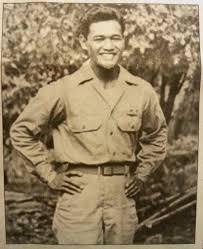

#the philippines#Philippines#Filipino#Filipino history#Philippine history#Pinoy#us imperialism#us colonialism#Us colonisation#U.S imperialism#U.S colonialism#U.S colonisation#American imperialism#American colonialism#American colonisation#Filipino American#Filipino American history#Asian history#South East Asian history#Colonialism#Imperialism#western colonialism#Western imperialism
108 notes
·
View notes
Text

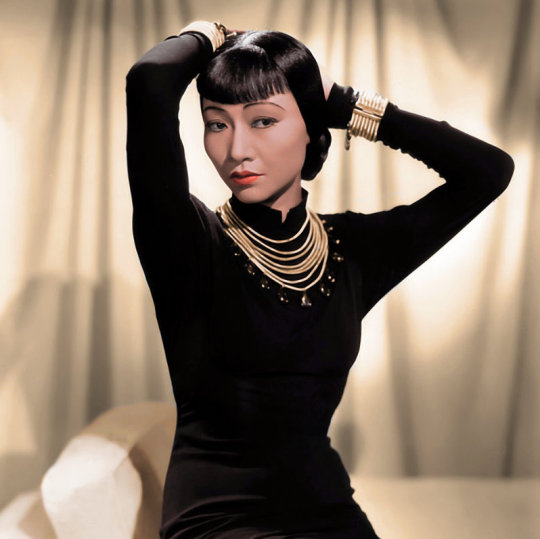
Propaganda
Maude Fealy (King Rene’s Daughter, David Copperfield)—She served cunt all the time
Anna May Wong (The Thief of Bagdad, Shanghai Express)—Wong was the first Chinese American movie star, arguably the first Asian woman to make it big in American films. Though the racism of the time often forced her into stereotypical roles, awarded Asian leading roles to white actors in yellowface, and prohibited on-screen romance between actors of different races, she delivered powerful and memorable performances. When Hollywood bigotry got to be too much, she made movies in Europe. Wong was intellectually curious, a fashion icon, and a strong advocate for authentic Asian representation in cinema. And, notably for the purposes of this tournament, absolutely gorgeous.
This is round 3 of the tournament. All other polls in this bracket can be found here. Please reblog with further support of your beloved hot sexy vintage woman.
[additional propaganda submitted under the cut.]
Maude Fealy propaganda:
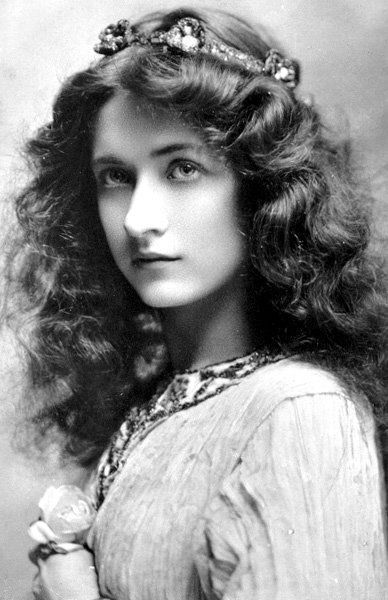

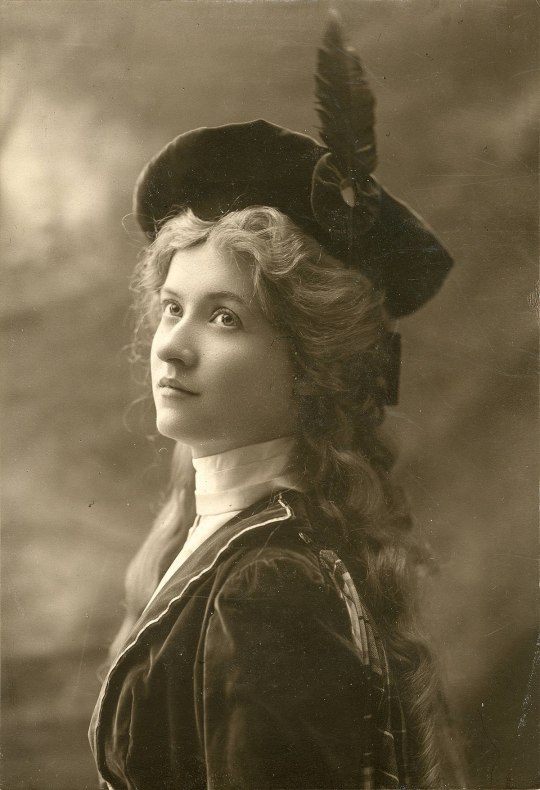
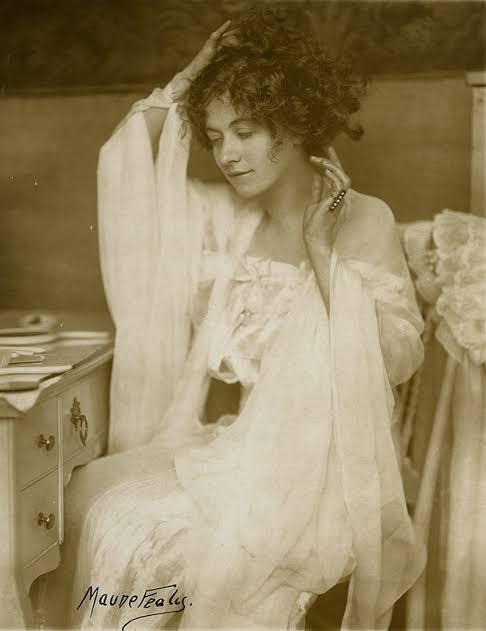
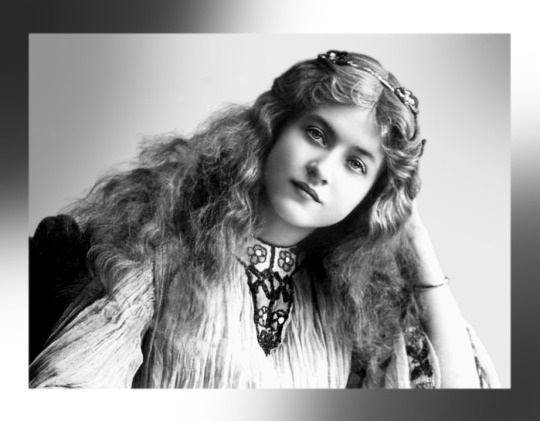
Anna May Wong propaganda:

"She so so gorgeous!! Due to Hollywood racism she was pretty limited in the roles she got to play but even despite that she’s so captivating and deserves to be known as a leading lady in her own right!! When she’s on screen in Shanghai Express I can’t look away, which is saying something because Marlene Dietrich is also in that film."

"SHE IS ON THE BACK OF QUARTERS also she was very smart and able to speak multiple languages and is a fashion icon on top of the acting/singing"

"Paved the way for Asian American actresses AND TOTAL HOTTIE!!! She broke boundaries and made it her mission to smash stereotypes of Asian women in western film (at the time, they were either protrayed them as delicate and demure or scheming and evil). In 1951, she made history with her television show The Gallery of Madame Liu-Tsong, the first-ever U.S. television show starring an Asian-American series lead (paraphrased from Wikipedia). Also, never married and rumor has it that she had an affair with Marlene Dietrich. We love a Controversial Queen!"

"She's got that Silent Era smoulder™ that I think transcends the very stereotypical roles in which she was typically cast. Also looks very hot smouldering opposite Marlene Dietrich in "Shanghai Express"; there's kiss energy there."
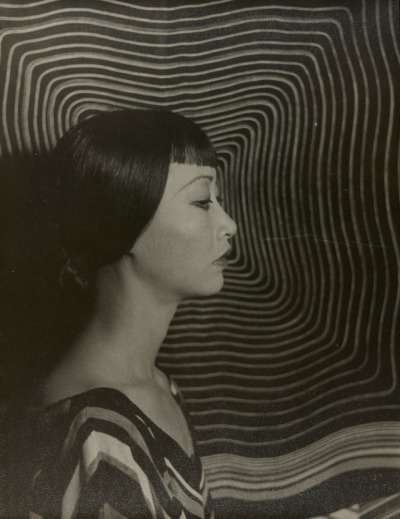
"Hot as hell and chronically overlooked in her time, she's truly phenomenal and absolutely stunning"
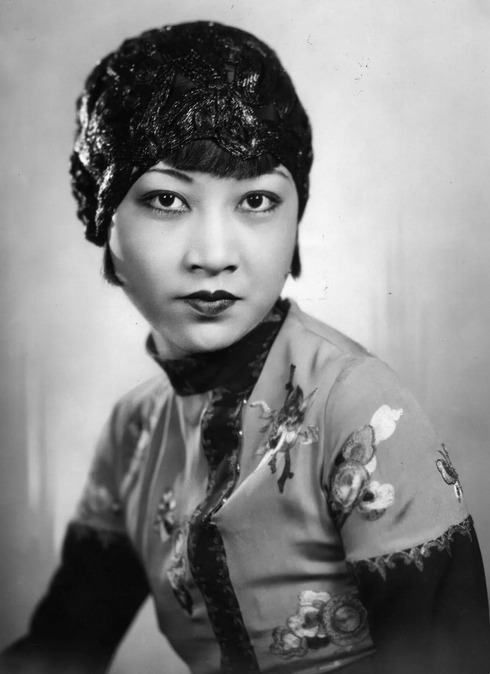

"A story of stardom unavoidably marred by Hollywood racism; Wong's early-career hype was significantly derailed by the higher-up's reluctance to have an Asian lead, and things only got worse when the Hayes code came down and she suddenly *couldn't* be shown kissing a white man--even if that white man was in yellowface. After being shoved into the Dragon Lady role one too many times, she took her career to other continents for many years. Still, she came back to America eventually, being more selective in her roles, speaking out against Asian stereotypes, and in the midst of all of this finding the time to be awarded both the title of "World's Best Dressed Woman" by Mayfair Mannequin Society of New York and an honorary doctorate by Peking University."
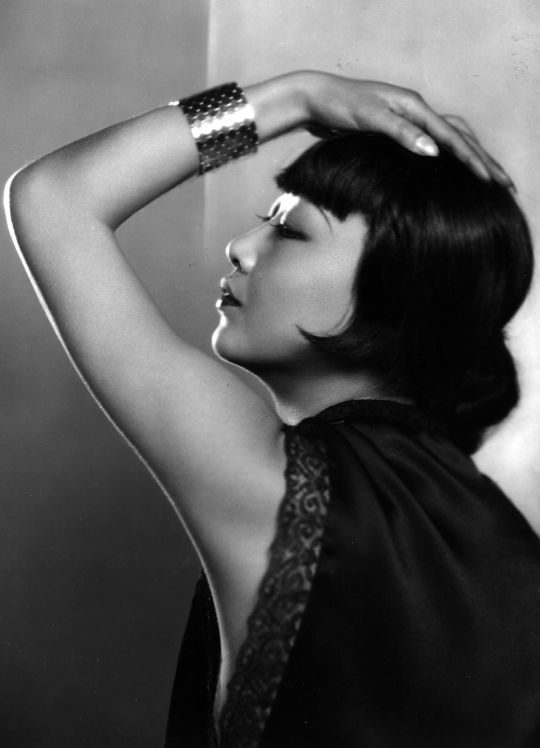
"Incredible beauty, incredible actress, incredible story."
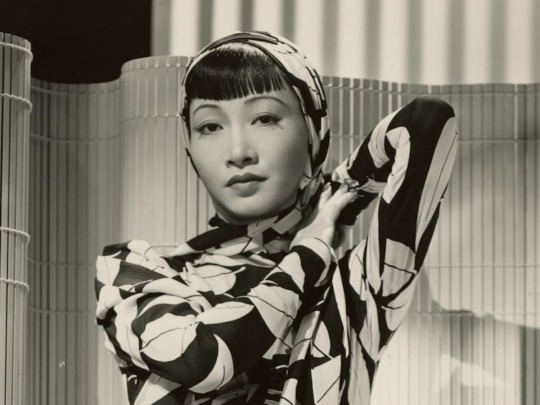
"-flapper fashion ICON. look up her fits please <3 -rumors of lesbianism due to her Close Friendships with marlene dietrich & cecil cunningham, among others -leveraged her star power to criticize the racist depictions of Chinese and Asian characters in Hollywood, as well as raise money and popular support for China & Chinese refugees in the 1930s and 40s. -face card REFUSED to decline"

140 notes
·
View notes
Text
Hot take: I'm GLAD they took out Sokka's sexism for the Netflix remake

I'm gonna be killed for this, but I do feel like Sokka's sexism felt very westernized, ignoring women's roles in the cultures depicted in the cultures provided (such as calling fans girly, despite them being unisex in East Asian cultures). And it's mainly in book 1 where he's sexist, so it's not like it can't be carefully rewritten so that another character flaw is made. My only question is how it's gonna be explained that his and Katara's grandmother left the Northern Water Tribe.
I'd imagine that his arc in this version would focus on his insecurity as a nonbender, something that wasn't present in the Southern Water Tribe (since Katara was the only bender), but becomes more apparent during their travels and he has concerns about being in the way, especially since he's the big brother who's supposed to protect Katara, and he's worried about letting his dad down.
23 notes
·
View notes
Text
Caitlyn and Mizu Compare/Contrast


For some reason, I find that these two characters. Two different women from very different shows, have striking similarities to one another as well as differences.
Differences
Caitlyn comes from one of the wealthy families in her series; Mizu grew up broke poor
Caitlyn is driven towards helping others; Mizu is driven by revenge
Caitlyn's biracial heritage is never once brought up negatively, it's just a matter of fact; Mizu was viciously ostracized by many people because of her mixed heritage
Caitlyn was sheltered; Mizu was forced to live through and witness cruelty at a young age
Caitlyn is basically a saint; Mizu is an anti-hero at her best
Caitlyn's world is scifi/fantasy setting where the only bigotry is classism; Mizu lives in ordinary world (with the genre being of Western Samurai) and the accurate depictions of sexism, classism, and racism are all on full display
Caitlyn grew up with her parents in a loving, though controlling, household; Mizu doesn't know who her father is, had an abusive mother, and barely a place to call home
2. Similarities
Both are from one of the most popular adult-animated shows on Netflix, praised by critics and fans alike
Both are of East Asian descent - Caitlyn is half-Chinese; Mizu is half-Japanese
Skilled in respective traits - Caitlyn in marksmanship; Mizu in swordsmanship
They both have a connection to the color blue
Following from the previous point, both have blue eyes
They both have a strained relationship with their respective mothers - Caitlyn resents her mother meddling in her life as an adult; Mizu's "relationship" with her mother is just straight up abuse and neglect.
Both are biracial -> half Asian and half white
Both were ostracized -> Caitlyn stated she was a "misfit" herself and her Enforcer colleagues believes she's a rich, entitled brat; Mizu's ostracization is even more pronounced given how many people saw her biracialness as "demonic"
Have some sort of LGBT connection - Caitlyn is a lesbian and in an evolving romance with Vi; many LGBT fans have connected to Mizu because her struggles with her gender was similar to their own, and she's had palpable romantic tension with both a male and female character
#lol arcane#lol caitlyn#blue eye samurai#bes mizu#comparison#comparison analysis#my posts#asianexcellence#biracialexcellence
25 notes
·
View notes
Text
"Baldurs Gate 3 proves the west finds sexuality in Japanese games appalling"
No. You aren't really understanding what's happening here. It is not a matter of the west approving its own sexualization in media and disapproving of Japanese because it's Japanese, just Asian, or foreign. This is a misreading of the situation.
It's actually the opposite. Anime and Japanese game FANS that have always been fans, HAVE ALWAYS LOVED that Japanese works were ALLOWED to have subject matter and themes without some angry radical feminist picking them apart, either demanding the companies themselves adhere to THEIR social standards, or trying to get the peer groups to shame consumers of the product and ostracize them so the individuals self-censor and don't freely and openly exchange this bit of culture with one another.
We used to have this freedom in the US, but then radical feminists swarmed in, decided certain things had certain meaning in accordance with their ideological viewpoints, and that if you ran afoul of their principles, you were a thought criminal and enemy of women by your own refusal to obey their beliefs. And so, even simply having bare breasts in a movie meant that at any time, academic feminists could write the equivalent of academic vagueposts talking about how one director and writer's decision to feature shitty dialogue and porn tier story was tantamount to the anthropomorphic loa of SOCIETY rubber stamping making women second class citizens, because a fictional woman was used for fun and profit for a story.
So to deal with the braying and hysterical nattering of the grass roots that actually listened to these ideological friends, as if these negative views were, "just their friends opinions" (more like the views of their new religion) to keep the peace, writing changed a bit to avoid invoking the subjects that'd get the angry radfems screaming and pointing at things to rebuke them for their supposed crimes.
And we lost the innocence of boob jokes, nudity, the assumed harmlessness and benignity of liberal sex and body humor, and had to add that dogmatic baggage about all men being craven abusive manipulators into how they were depicted and the "proper" way men and women should relate in fiction.
You know, the exact things that were missing in our diet of mainstream media in the west, that we consumed Japanese media to get into our mental diets, because the sheer stupid harmless and innocent FUN had been gatekept and freeze dried out of our media over here with endless discourse and antagonism by slanted critics that hated a work because it didn't carry water for their ideological beliefs, or exist as a ruinous slag for its defiance to that totalitarian bullshit.
The only overt sexuality that the Capital P Progressives would tolerate, was sexuality that "subverted the status quo." AKA, sexuality that works and media dominated by THEIR ideological principles owned. Sexuality that was dominated by LGBT themes and subjects. Sexuality that translated and interpreted heterosexuality through a 'queer' lens. That was the only sexuality allowed in games, because it was the only sexuality that wasn't "harmful, anti-feminist, cisheteronormic patriarchy." And so they reserved the right to shit on any work with sexuality in it that didn't fit their views of what was good and right and moral and "progressive" in their particular way.
Baldur's Gate 3 and before it, Dragon Age and its sequels. They were constructed from the ground up to adhere to the sometimes arbitrary principles and absolutely biased interpretations ("Our sacred thing, their shit.")
It's not that the games are Japanese. It's not that they're from Asia or Asian developers. It's not that Baldur's Gate is western, American, or 'white.' These are easy detours to make but they misunderstand the crux and true sinister behavior at play here.
They hate Japanese games that feature Japanese sexuality in media, because that media does not conform to their very exacting views of what "proper" sexual representation is. They hate Japanese games and media, because unlike their power base in the west, imping and co-opting things ala Sweet Baby Inc runs interference to make games more, "diverse" and "inclusive," they have no power to make the creative decisions that alter the entire game, its tone, its themes, its writing, its casting, its world, or the makeup and formation of the companies, the unions, or the national policies that tie them and their values into the industry at the fundamental level.
They hate Japan and its industry and its culture and its media because they see an opportunity to move in and start dominating the industry, or natter and nag it and make it seem like the west is grassroots rejecting or criticizing it from the perspective of a westerner. It's not true.
These people have taken over games journalism and the representative voices of the medium and industry and are effectively astro turfing the consumer base with their own disgusting interpretations of shit, to make it SEEM like the consumer and fanbase doesn't like it or are complaining about Japanese media in this way. When in fact, it's just a much more well obfuscated version of when the Moral Majority of the right wing/religious members of society tried to co-opt comic books, rock music and set moral and ethical standards for content that could be depicted, and to what age group.
It's THEM that create entire stupid ratings systems for games based on how "inclusive and progressive" they are, deducting points for women not being lead characters, deducting points if a work of literature features sexual violence at all, deducting points if there's no queer people visibly queering queerly as part of the main story you have to interact with, preferably queerly. And THEM that are trying to simultaneously maintain an aire of, "white people shouldn't be allowed to criticize not-white/foreign cultures and literature," and "Japanese society and culture is patriarchal and shit and wrong tho."
These people exist in the west, but they do not REPRESENT the true opinions of the consumers and people of the west. But they're effectively a group of charlatans we can't get rid of or wrangle in. They were taught guerilla cultural warfare, subversion tactics, and conspire to get in on the ground floors and board rooms of entire industries before making themselves visible, with people acting as mycelium agents from inside other businesses clandestinely to make that association seem organic.
It's them causing this disturbance and shit. Not "the west." It's a conspiracy of assholes. It's them trying to be the gatekeepers that get to then put their guys into place as voice actors, markets, editors, and localizers, based on those principles.
So a real life woman in a Japanese game greenscreened, a sexy and conventionally attractive woman, gets called some sort of neotonous underaged oversexualized doll, while they deliberately try and go for the most androgynous to gender ambiguous depiction of femininity in the west on purpose, due to beliefs that will somehow "lower western expectations of femininity to be more realistic."
It's just unfortunate that Japan has to deal with this without really understanding just how bad it is a problem to deal with. We can't even really contend with it because proving these people are conspiring on an ideological basis is very difficult, even if they do slip up every once in a while.
13 notes
·
View notes
Text
what is it with fandom finding asian women characters annoying, like they said it about keiko from ds9 and jubilee from xmen the animated series and rose tico from star wars and mona from legends of tomorrow and glimmer from she-ra. like why “annoying” specifically, like is their tolerance for immaturity or imperfection just that low when it’s a character who is not white? is it because asian women in popular western media have been depicted as submissive and subservient for so long and these depictions have become so normalized that any time an asian woman onscreen asserts her personhood, audiences find it grating? is it because the (often white) writers reduce these asian women characters to plot devices with little interiority, rendering them one-dimensional and making it difficult for audiences (who are already resistant to identifying with any character who is not a white man) to relate to them? i think it’s probably all of the above to some extent
#out of all the characters ive mentioned glimmer is the most three dimensional and i put little to no blame on the writers#for the fandom finding her annoying. that one is quite egregious to me#it frustrates me bc like. you are writing an asian woman and you don’t empathize with her and your audience doesn’t empathize with her#so like what the fuck are you even doing. what is The Point. who is this for#bc it doesn’t feel like it’s for me#syl posts
274 notes
·
View notes
Text
Midway through Jamil Jan Kochai’s collection The Haunting of Hajji Hotak and Other Stories, which maps generations of Afghan and Afghan American lives against over a century of entwined wars, sits what appears to be a résumé. Entitled “Occupational Hazards,” it meticulously records the everyday labors of an Afghan man: [...] his “[d]uties included: leading sheep to the pastures”; from 1977–79, “gathering old English rifles” left over from the last war while being recruited into a new war; in 1980–81, “burying the tattered remnants of neighbors and friends and women and children and babies and cousins and nieces and nephews and a beloved half-sister”; [...] becoming a refugee day-laborer in Peshawar, Pakistan; in 1984, becoming a refugee in Alabama, where he worked on an assembly line with other Asian migrants whom the white factory owner used to push out the local Black workforce; and so on. Dozens of events, from the traumatic to the mundane, are cataloged one by one in prose that is at once emotionless and overwhelming. [...] Kochai interviewed his father for the résumé’s occupational trajectory [...]. An Afghan shepherd [...] is displaced by imperial wars and then, in the heart of empire, is conscripted into racialized domestic economies [...]. [M]ethodically translating lived violence via a résumé, a bureaucratic form that quantifies labor in its most banal functionality, paradoxically realizes the spectacular breadth of war and how it organizes life’s possibilities. [...]
---
In this collection, war is past, present, and plural. In Afghanistan, Kochai recounts the lives of Logaris and Kabulis, against the backdrop of the US occupation, still dealing with the detritus of previous wars - British, Soviet, and civil - including their shrines, mines, and memories. In the United States, Afghan Californians experience the diasporic conditions of war -- state neglect of refugees combined with targeted surveillance -- amid the coming-of-age of a second generation that must confront inherited traumas while struggling to build political solidarities with other displaced youth.
These 12 stories explore the reverberations between historical and psychic realities, invoking a ghostly practice of reading. Characters, living and dead, recur across the stories [...]. Wars echo one another [...]. Scenes and states mirror each other, with one story depicting Afghan bureaucracies that disavow military and police violence while another depicts US bureaucracies that deny social services to unemployed refugees. History itself is layered and unresolved [...]. Kochai, who was born in a refugee camp in Peshawar, writes from the position of the Afghan diaspora [...]. In August 2021, the US relegated Afghanistan to the past, declaring the “longest American war” over. Over for whom? one should ask. [...] War, in other words, is not an event but a structure. [...]
---
In Kochai’s collection, war is not the story; rather, war arranges the scenes and life possibilities [...]. Kochai carefully puts war itself, and the warmakers, in the narrative background [...].
This is a historically incisive narrative design for representing Afghanistan. Kochai challenges centuries of Western colonial discourses, from Rudyard Kipling to Rambo, that conflate Afghanistan with violence while erasing the international production of that violence as well as the social and conceptual worlds of Afghans themselves. Instead, this collection moves the reader across Afghans’ transcontinental, intergenerational, and multispirited social worlds -- including through stories of migrations and returns, homes populated by the living and the martyred, language that enmeshes Dari, Pashto, and Northern California slang, as well as the occasional fantastical creature [...].
---
Like Kochai’s debut novel 99 Nights in Logar (2019), this collection merges realism and the fantastic, oral and academic histories, Afghan folklore and Islamic texts, giving his fiction a dynamic relation to history. Each story is an experiment, and many of them are replete with surreal or magical elements [...].
As in Ahmed Saadawi’s 2013 novel Frankenstein in Baghdad, a nightmarish sensorium collides with a postcolonial body politics [...].
In a recent interview, Kochai said that writing about his family’s experiences of war has compelled him to explore “realms of the surreal or magical realism […] because the incidents themselves seem so unreal […]. [I]t takes years and decades to even come to terms with what had actually happened to them before their eyes.” He points not to a documentary dilemma but to an epistemological one. While some scholars have argued that fantastic genres like magical realism are often conflated with exoticized imaginaries of the Global South, others have defended the form’s critical possibilities for rendering complex realities and multiple modes of interpretation. Literary metaphors, whether magical or otherwise, are always imprecise; as Afghan poet Aria Aber puts it, “you flee into metaphor but you return / with another moth / flapping inside your throat.” [...]
Kochai does not “escape” into the surreal or magical as fictions but as other ways of reckoning with war’s pasts ongoing in the present.
---
All text above by: Najwa Mayer. “War Is a Structure: On Jamil Jan Kochai’s “The Haunting of Hajji Hotak and Other Stories.”“ LA Review of Books (Online). 20 December 2022. [Bold emphasis and some paragraph breaks/contractions added by me. Presented here for commentary, teaching, criticism.]
#haunting#tidalectics#carceral geography#intimacies of four continents#multispecies#gothic#geographic imaginaries#frankenstein in baghdad#afghan#carceral archipelago
95 notes
·
View notes